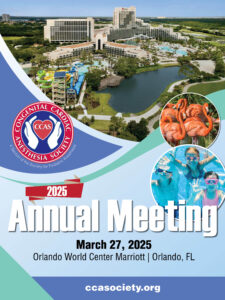Author: Sana Ullah, MB ChB, FRCA. Children’s Health, Dallas
A 9-month-old infant with a perimembranous ventricular septal defect demonstrates a peak Doppler velocity of 3 m/s across the defect by transthoracic echocardiography. There is no evidence of right or left ventricular outflow tract obstruction. Vital signs are as follows: HR 120, BP 110/60, and SpO2 98%. What is the estimated pulmonary artery systolic pressure?
EXPLANATION
In the presence of regurgitant jets or shunt lesions, Doppler echocardiography is commonly used to estimate intracardiac pressures and gradients using the simplified Bernoulli equation:
P = 4V2
P = maximum instantaneous pressure gradient
V = peak velocity (m/s)
In the case of absent right ventricular outflow tract (RVOT) obstruction or pulmonary valve stenosis, the right ventricular systolic pressure (RVSP) approximates the pulmonary artery systolic pressure (PASP). Therefore, Doppler techniques can be used to measure the RVSP and hence approximate PASP.
In the presence of a ventricular septal defect (VSD), the peak velocity (V) across the lesion can be used to quantify the pressure gradient between the left and right ventricles during systole. If the left ventricular systolic pressure (LVSP) is known, the RVSP is calculated using the following equation:
RVSP = LVSP – 4(VVSD)2
In the absence of LVOT obstruction, the LVSP is equal to the systolic blood pressure (SBP) measured by the cuff. Hence,
RVSP = SBP – 4(VVSD)2
Using the patient data from the stem into this equation:
RVSP = 110 – 4(3)2
RVSP = 110 – 36
RVSP = 74 mmHg
As there is no RVOT obstruction or pulmonary valve stenosis, the PASP is the same as the RVSP, i.e. 74mmHg.
REFERENCES
Anderson B. Echocardiography: The Normal Examination and Echocardiographic Measurements. (pp. 134-137). Australia. MGA Graphics, 2000.
